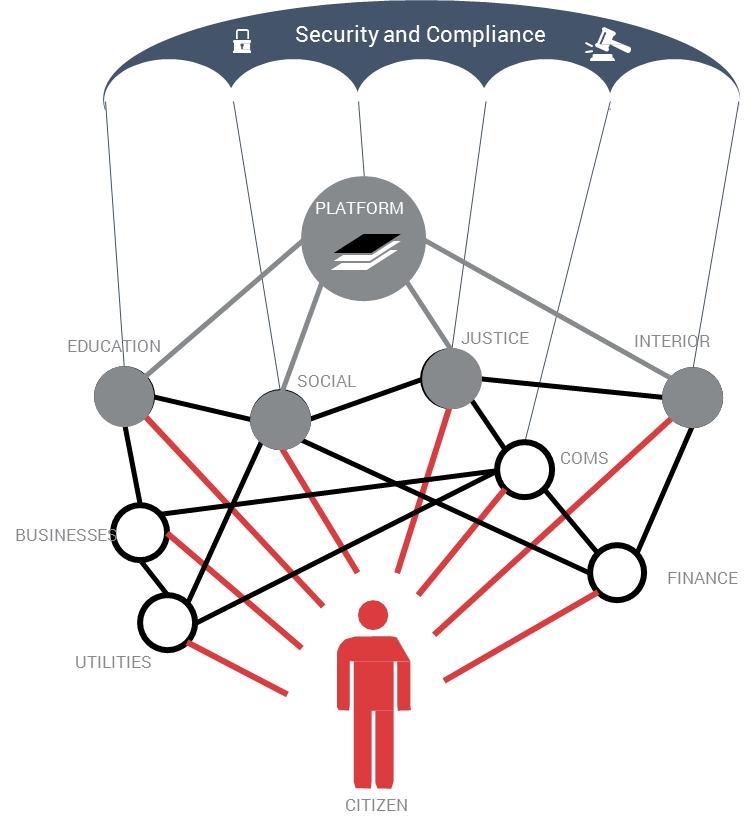Digital transformation of the public sector has a real impact on citizens. Here are three main benefits of API-driven government, aka government API:
- Digitalized administration brings a lot of agility for procedures and makes them easier to follow by citizens.
- It streamlines administrative processes and optimizes the resources of civil servants.
- It reduces corruption and bypassing regulations.
Governments throughout the world are on the path of digital transformation. Some, such as the UK and Singapore are leaders according to the latest UN classification. Others are still in the process of planning their transformation.
Forbes has listed six digital transformation trends in government:
- Internet of Things
- Connected/Smart Cities
- Automation to free up more budget, security and protection
- Improving mobility
- Data collection and analytics
- Digital government platforms
All this would not be possible without putting in place an appropriate API Management solution.
Government API for immersive citizens’ experiences
API Management platforms play a critical role in the digital transformation of governments, namely: opening data and IT silos, thereby achieving a citizen-centered delivery of services.
An Axway sponsored survey carried-out with IDC on 600 of decision-makers from all sectors highlighted a very important fact:
- Enterprises have grown out of omnichannel whereby they served alone their customers via multiple channels. They have realized that to better serve the customer, they must partner and connect with an ecosystem of providers, all of whom provide a rich customer/citizen experience, an ecosystem-centric experience.
To realize this, enterprises and government departments must connect and integrate their information systems. They often do this via a platform that does the integration of data and processes and provides a single-entry window (SEW) to the user, a sort of one-stop-shop.
Digital government architecture

Digital transformation of governments is supported by architecture with two main pillars, namely:
- Common services and shared data platforms. Citizens view government as one single entity and, as such, it is far more convenient to deal with it as an integrated unit as opposed to hundreds of fragmented sections and subsections of existing ministries. Joining-up government is a fundamental prerequisite for citizen’s user experience.
- Identity management, privacy, and security. Security and compliance are becoming of paramount importance as ecosystems expand and IT systems open to each other.
A typical example is the issuing of a work permit. Such a service would need:
- Several data platforms: work permit from Ministry of Work; criminal records from Ministry of Justice, and visas from General Security – Ministry of Interior.
- Identity and Payment platforms. A common security framework that allows the tokens from the ID platform to be accepted in the data platforms.
Making all government departments IT systems communicate requires governance and agreement on three types of APIs:
- Accessibility: what APIs are public, available to partners, or private/internal to the given administration
- Data and service APIs: APIs for access to data platforms, APIs for access to services, and composite APIs
- Government API: standard APIs, typically include basic government services such as form filling and so on. TM Forum is currently associating OpenAPIs and Smart City Reference Architecture.
Finally, you should consider some major success factors when designing and implementing government API:
- Treat APIs as products: User requirements, design, test, deliver, monitor, promote. Promotion is often overlooked as this involves less technical but marketing activities.
- Choose an appropriate API management tool that caters for API Lifecycle Management, versioning, API security, IAM, API throttling, support for large volumes, ecosystem API federation, microservices.
- Establish governance for APIs, typically, within a cross-governmental body: coordination, security policies, standardization, interoperability, best practices, and so on.
To learn more, check out Axway government API use cases:
- The Danish Defense
- The French Public-Sector Pension Office
- The French National Family Allowances Fund

Follow us on social